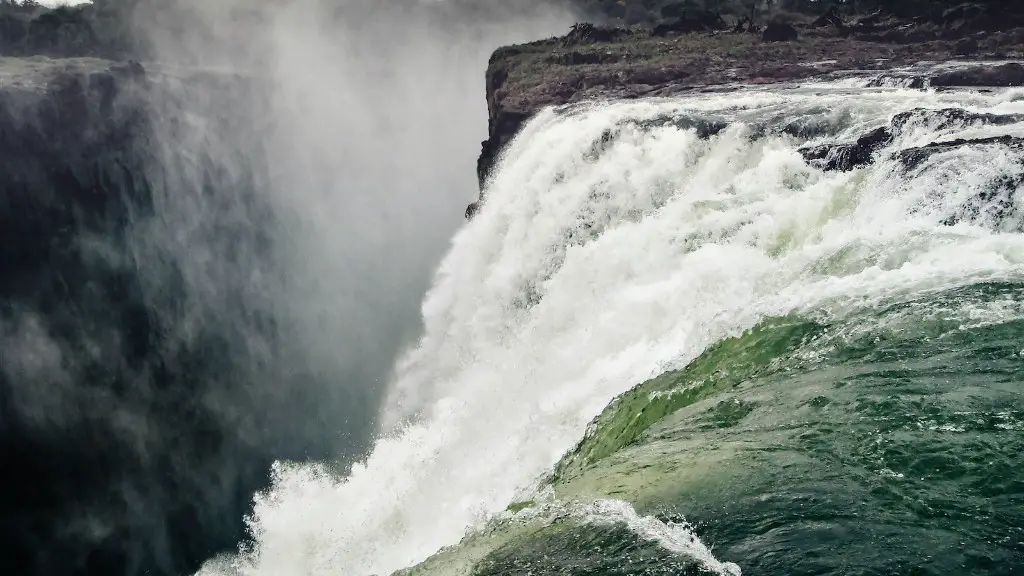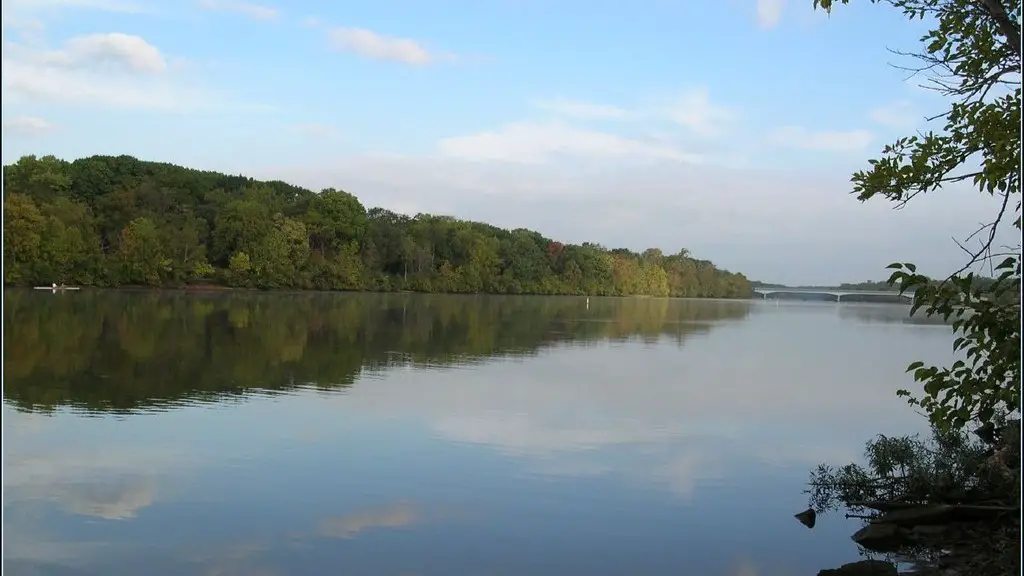Floodplain Dynamics
Floods are an unavoidable part of life in the Mississippi River Valley due to the dynamic nature of the river. This dynamic nature can be explained by the process of flooding, which is compounded by a number of influences including land use and climate change. The Mississippi River is a large and powerful waterway that is closely entwined with the development and cultural history of the region, making it vital to consider the impact of flooding on it.
The main cause of flooding in the Mississippi River Valley is the seasonal rise of water levels that accompany summer and autumn storms. Heavy rainfall can cause rapid runoff in areas with depleted soils, exacerbating flooding and resulting in surface water entering areas normally protected from flooding. The Mississippi also floods due to extreme conditions such as hurricanes and storm surges.
Furthermore, human activity can contribute to increased flooding. Deforestation of riparian vegetation, such as forests, from the banks of the Mississippi can leave the soil exposed and vulnerable to erosion. This makes it easier for floodwaters to wash across the land and into areas bordering the river. Similarly, the construction of levees is increasing the rate of flooding due to the narrowed channel of the river resulting in higher water levels, and reduced water-holding capacity in the floodplain.
Impact and Consequences
Flooding of the Mississippi River has a direct and indirect impact on the people and environment of the River Valley. The direct effects of flooding on an area can be devastating. Floodwaters can cause structural damage to buildings, the destruction of property and the loss of valuable infrastructure. On a larger scale, this prevents economic activity due to road closures and the stagnation of commercial transport.
The impact of flooding also extends to the environment. During large flooding events, the amount of sediment and contaminants carried in the water can devastate ecosystems. Excessive amounts of sediment can damage spawning grounds for fish and destroy aquatic vegetation along the banks, reducing the overall habitat for wildlife.
There are also the indirect consequences of flooding which are often overlooked but are just as important. Economic losses due to flooding can take years to recover from and have caused irreversible harm to communities. Hundreds of millions of dollars have been spent in flood relief efforts across the Mississippi Valley and with changing weather patterns, the possibility of more frequent flooding remains.
Responses and Solutions
The people of the Mississippi Valley have responded to the risk of flooding with a combination of engineering and land management solutions. These include the use of levees to protect communities and the construction of dams to control the flow of water. The U. S Army Corps of Engineers also closely monitors the river, collecting data and informing local authorities of potential flooding.
In addition to these artificial solutions, the Mississippi Valley has also seen an increase in the adoption of sustainable land use practices. This includes the reintroduction of natural vegetation to riverbanks and floodplains, reducing the risk of erosion and increasing the ability of the land to absorb excessive water. State and federal funding is also increasing for conservation and development projects designed to further reduce flood risks.
However, in many cases, these measures have not been enough to protect against unprecedented flooding. Therefore, the people of the Mississippi Valley are facing an ever more uncertain future and must work together in order to prepare for the worst.
Economic Impact
The economic impact of the Mississippi River’s flooding is difficult to estimate, but has been far reaching. Flooding impacts industry, agriculture, and commerce as it disrupts transport, devastates land, and destroys goods and infrastructure. These losses exacerbate hardships in affected communities, as they consume money that otherwise would have been invested into other areas such as education and healthcare.
The agricultural sector is one of the hardest hit, with farmers losing valuable crops and income in the wake of flooding. With the majority of US farmland located in the Mississippi Valley this has a considerable economic impact. An additional aspect is the disruption of markets, as shipping channels become impassable and goods struggle to reach their destination.
Businesses are also affected due to the fluctuations in consumer demand and the real estate market. Thousands of homes are destroyed in flooding, resulting in high insurance costs and evictions. This has a serious impact on the livelihoods of society, as floods turn productive areas into ghost towns and leave previously prosperous populations in ruin.
Insurance Considerations
With the dramatic increase in flooding, insurance companies are struggling to keep pace. Although insurance can provide a way to tide victims over and cover the cost of repairs and replacement, in many cases, this is not enough. The majority of insurance does not provide adequate coverage for extreme floods, leaving communities vulnerable when it counts the most.
Furthermore, insurance rates often rise when a flood occurs and with the increased frequency of floods, the cost of insurance for people in the Mississippi Valley is skyrocketing. This leaves thousands unable to afford the coverage and further perpetuates the economic cycle of poverty as people are unable to rebuild their homes and businesses.
Future Outlook
The future outlook is uncertain, as the risk of flooding is a continual and ever-present danger to those living in the Mississippi Valley. Climate change and extreme weather events are making the problem worse and despite efforts to curb the impact of flooding, it is becoming increasingly difficult to protect against the worst cases. This leaves people reliant on insurance companies to cover many of their losses and as these companies struggle to keep up with flooding, the people most vulnerable are left in a precarious situation.
An additional aspect to consider is how this increased risk affects the development of the River Valley. The threat of flooding can deter investment in an area as it is uncertain whether a business or building will survive the flood season.
Finally, the risk of flooding is likely to increase with climate change and rising global temperatures, adding to the devastation of local communities. Without intervention, the impact of flooding on the Mississippi Valley is only likely to get worse, with devastating consequences for the future.
Environmental Risks
A large portion of the Mississippi Valley is located in flood prone areas, meaning that flooding significantly increases the risk of toxic runoff entering the river and contaminating the environment. This is due to the increased levels of pollutant particles that are brought in by the floodwaters, resulting in a heightened risk of contamination to the local water supply.
The influx of contaminants can increase levels of heavy metals and other dangerous substances in the water, resulting in a higher risk of illness to the people of the Mississippi Valley. During flooding, pollutants can enter the food chain, as fish are exposed to toxic particles when they swim in contaminated waters.
The increased level of pollutants can also damage natural habitats and degrade ecosystems. Nutrients entering the water can cause excessive plant growth, depleting the water’s oxgen supply and leading to the death of primary producers, particularly fish. The resulting ecosystem disruption can have far reaching consequences, as vital species are wiped out and biodiversity is reduced.
Political Action
In response to the ever-increasing risk of flooding in the Mississippi Valley, local, state, and federal governments have taken action. The US Army Corps of Engineers have poured millions of dollars into flood control projects such as levees and dykes, as well as having researched solutions such as introducing controlled dam releases to inhibit flooding.
Political change is also taking place, with policy makers and officials calling for the reintroduction of strict building codes and land use planning strategies in order to reduce the risk of flooding. With this increased awareness and the political will to act, it is possible to build a more resilient region and protect against the worst of the impacts of flooding.
It is also important to address the wider changes in the environment that are causing flooding, such as climate change and deforestation. Political solutions such as carbon taxes and improved environmental management are needed to reduce the severity of these issues and help to create a future in which communities in the Mississippi Valley are safe and secure.
Community Engagement
Community engagement is essential for reducing the impact of flooding on the Mississippi Valley. People in the area need to be educated about the risks of flooding and work together in order to be prepared for when it occurs. Programs such as FloodReady, a community-based flood preparedness program, can help to increase the level of resilience in people’s homes.
Communities also need to be involved in the political decisions being made to address flooding, by voicing their concerns and working with local leaders. This gives them more of a say in the strategies that are developed for tackling the issue, ensuring that the strategies are effective and do not push the burden of flooding onto vulnerable populations.
Finally, community groups and organizations such as the Red Cross and FEMA can also provide vital aid and support to those affected by flooding, ensuring that people have access to essential services such as food and shelter in times of need.
Conclusion
Flooding in the Mississippi River Valley is an ever-present threat that cannot be ignored. The rising risk of flooding, compounded by the artificial additions such as levees, makes the future of the River Valley uncertain. However, with the right strategies and political backing, communities can be resilient and work together in order to prepare for the worst and reduce the devastating impacts of flooding.





